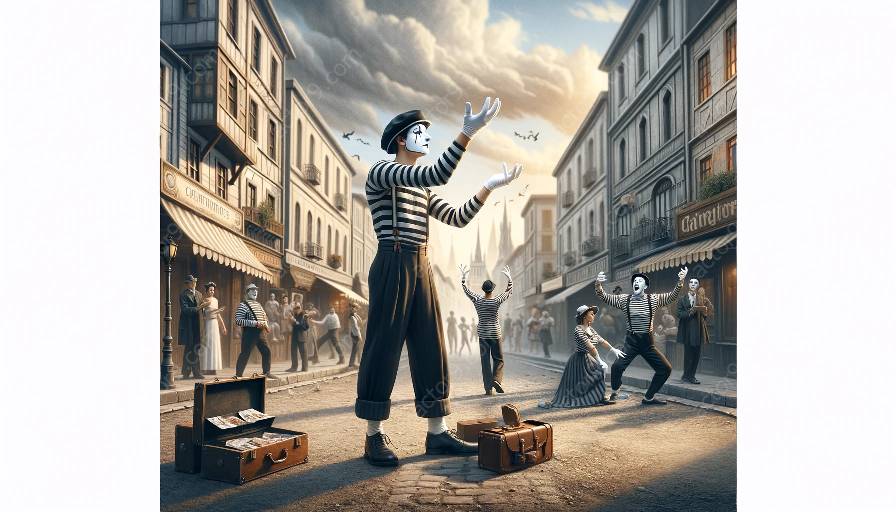Mime and physical comedy are art forms that heavily rely on body language and expression to convey characters and tell stories. The nuanced movements and gestures of the body play a crucial role in developing and portraying characters in these forms of performance art.
Understanding Body Language and Expression in Mime
In mime, body language is the primary means of communication. Performers use their entire body to convey emotions, actions, and circumstances without the use of words. Every subtle movement, facial expression, and gesture contributes to the development of the character and the narratives portrayed.
Through deliberate use of body language, mimes create and portray characters with distinct personalities and traits. For example, a mime artist may use their posture to convey a sense of confidence or timidity, their hand gestures to express joy, and their facial expressions to communicate various emotions. These elements collectively contribute to shaping the character's identity and traits.
The Role of Body Language in Character Development
In physical comedy, body language serves as a key tool for building and developing comedic characters. Comedic performers use exaggerated movements, facial expressions, and physical humor to convey the traits and quirks of their characters. The utilization of body language creates memorable and engaging characters, adding depth and humor to the performances.
Moreover, body language in physical comedy is vital for creating comedic scenarios and enhancing the comedic timing of the performance. Characters in physical comedy rely on unique body postures, gestures, and movements to elicit laughter and engage the audience.
Effectively Communicating Through Body Language in Mime and Physical Comedy
Body language in mime and physical comedy calls for precision and clarity in conveying character traits and narratives. Performers undergo rigorous training to master the art of non-verbal communication through body language and expression. They learn to control their bodies with precision, making each movement intentional and meaningful in character portrayal.
Additionally, the fusion of body language with the elements of facial expression, physicality, and movement amplifies the impact of the characters and their development in these performance arts. Successful character development in mime and physical comedy hinges on the performers' ability to effectively express emotions, actions, and intentions solely through body language.
Conclusion
Body language and expression play a pivotal role in character development in mime and physical comedy. The intentional use of body movements, gestures, and facial expressions shapes the identities of characters and enriches the narratives in these expressive art forms. Understanding and harnessing the power of body language is essential for performers to effectively communicate characters and engage audiences in the captivating world of mime and physical comedy.


























